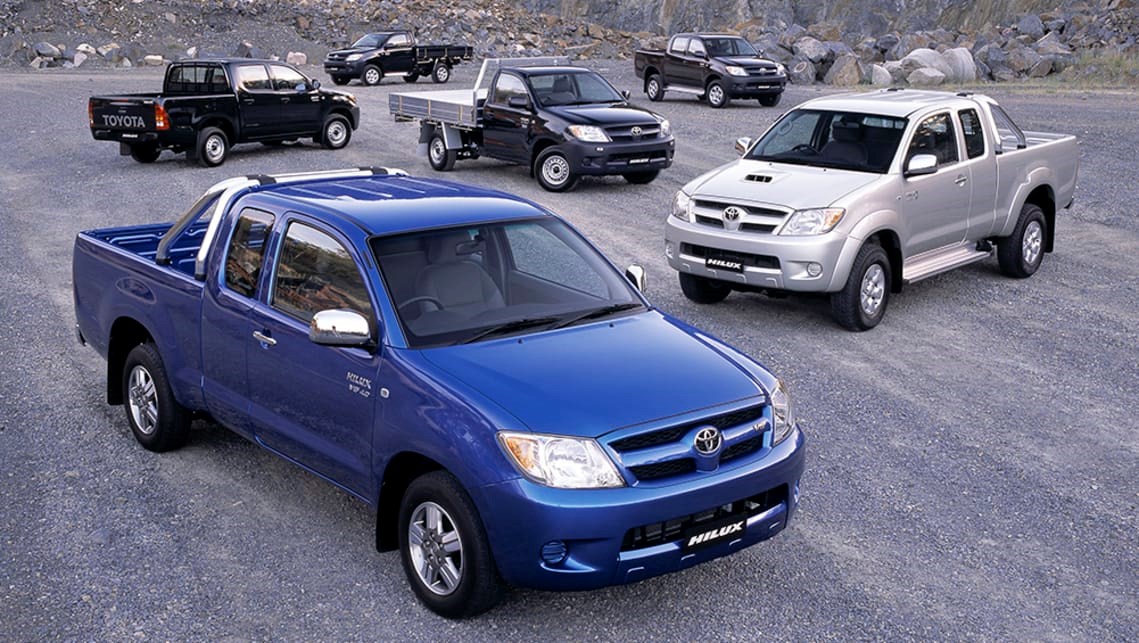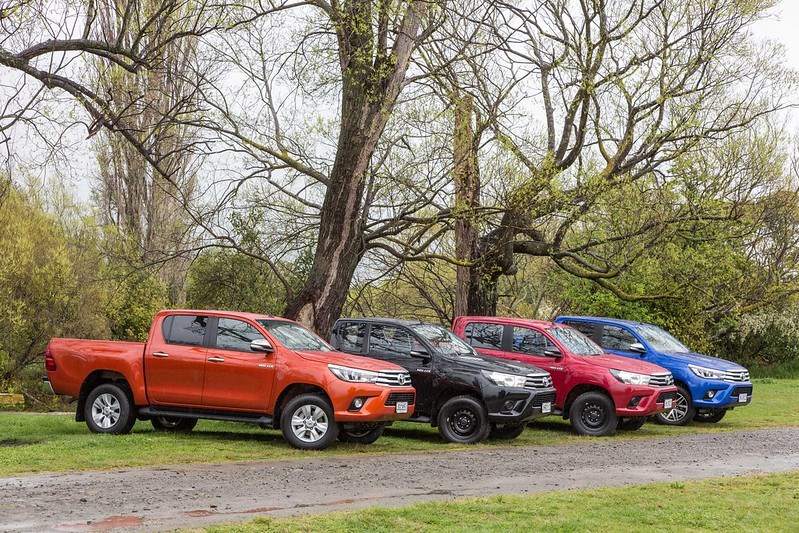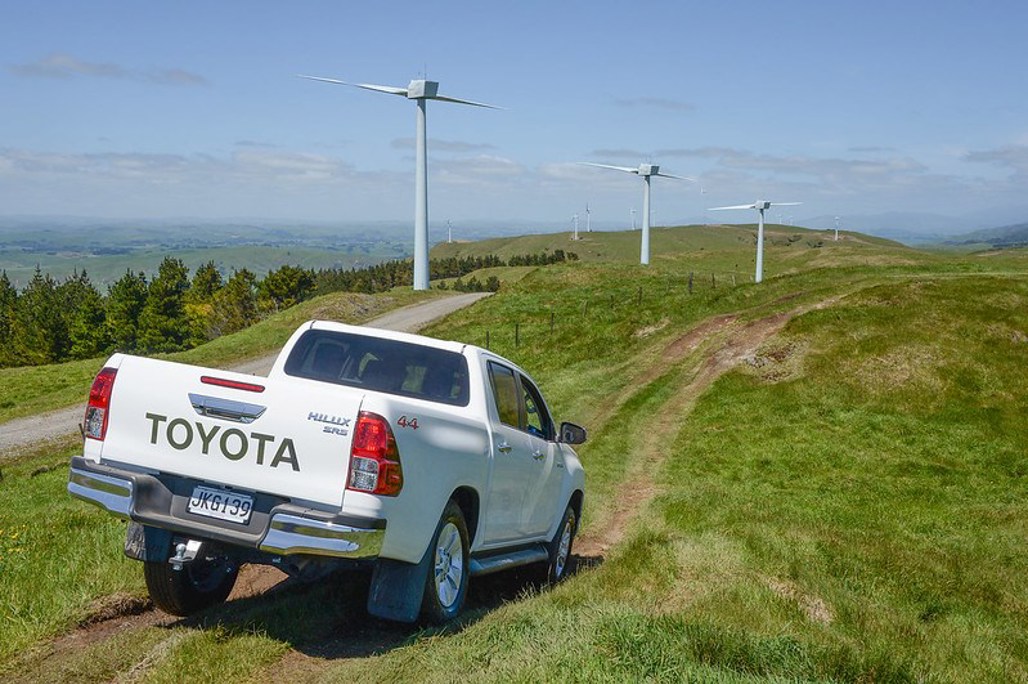Utes haven't always been the new-vehicle sales leaders in New Zealand like they are now, but the Toyota Hilux has always been considered something close to a national car for Kiwis. It's something to do with the blend of an everyperson brand, relevance to the rural community that's still such a part of our national identity... and maybe lots of awesome television advertisements from Toyota NZ.
The Hilux remains a feelgood purchase that has the safety net of a Toyota dealership on every corner (well, not quite, but close) and plentiful parts supply. Because one in every five cars on NZ roads is a Toyota, so the brand has an enormous infrastructure to serve those used-vehicle customers.

Hilux also boasts famously strong residual values. That might hurt when it comes to buy a used example, but look after it and you've got a great chance of a good return when you come to sell it again. Therefore you potentially enjoy a relatively low cost of ownership.
Here, we've chosen to dip a toe in the muddy water (you know, because we're off-roading) of the seventh-generation Hilux (from 2005, pictured above and below) because that's really the start of what we think of as the "modern" generation, but we'll mainly focus on the eighth-generation onwards (late-2015) as that's where the sweet spot of age, value and equipment really lies.
The 2005 model represented a significant increase in size, presence and equipment over previous models, especially the top SR5 model - the first step from Toyota towards "lifestyle" utes as we think of them today. The mainstay engine was a 3.0-litre turbo-diesel four (120kW/343Nm), with lower-end versions relying on a 2.7-litre petrol unit. But there was also a bit of glamour in a 4.0-litre V6 petrol (175kW/376Nm) option.
To view all Hilux 2005-15 models listed on DRIVEN, click here
In some respects this was the golden era of the Hilux in NZ, because it was the last model to lead the pickup-truck segment. After more than three decades at the top of the tree, Hilux was overtaken by Ranger in 2014 and the Ford has held top spot ever since.

The 3.0-litre turbo-diesel engine (1KD-FTV if you like Toyota engine codes, which lots of people do) did put a bit of a dent in Toyota's reputation for reliability. The fuel injector seals were prone to leaking, to the extent that Toyota NZ introduced a requirement to change them every 45,000km.
So if you want some work out of this engine, it might pay to have the oil pickup inspected to check for carbon buildup (easily done with a probe), or simply change the seals as a precautionary measure.
The eighth-gen Hilux (late-2015) was a huge deal: the first major change for the model in nine years (pictured below).

The boat-like frontal styling wasn't to all tastes (it was facelifted big-time in 2018), but the new model brought a fresh 2.8-litre turbo-diesel four, an expanded range of high-riding 2WD models called Prerunner and even more luxury with a flagship SR5 Limited. All of which was a direct response to Ford's dominance with its Ranger Hi Rider and Wildtrak models.
To view all Hilux 2015-21 models listed on DRIVEN, click here
With double the number of variants (up from 12 to 21), the eighth-gen Hilux also offered a somewhat confusing range of outputs and tow ratings: from 123kW/343Nm to 130kW/450Nm for the new turbo diesel (oh, or 420Nm if it was manual), and five separate tow figures from 2.5 to 3.5 tonnes, depending on powertrain. These were later consolidated in the 2018 facelift (below) when the 2WD gained a locking rear diff, so check on the specs of the particular vehicle you're looking at.
The new Hilux retained a novel point of difference by keeping the 4.0-litre V6 petrol option, which was available on either an entry low-rider S model or the flagship SR5 Limited. It was a wild, thirsty ride either way.
Manual SR5 diesel models also had iMT, a rev-matching function for downshifts which was primarily for smoother towing but also proved a hit with keen drivers.
Following the 2018 facelift, Toyota dropped the entry S designation and introduced a new WorkMate model for 2019, with the return of the 2.7-litre petrol engine (although curiously, it retained the old frontal styling and still does). There was a new SR5 Cruiser flagship (below) and the whole range got a safety boost with the addition of the Toyota Safety Sense (TSS) package across the board. So even the sub-$30k WorkMate boasted adaptive cruise control.

However, the 2.8-litre (IGD-FTV) powertrain proved to have issues of its own in NZ and Australian conditions. The engine's Diesel Particulate Filter (DPF), which collects pollutants and periodically burns them off to clean up the exhaust, suffered chronic blockage in thousands of vehicles, mostly in higher ambient temperatures; the results were increased fuel consumption, nasty smells and telltale white smoke from the pipe.
The issue was much worse in Australia - bad enough to prompt a class-action lawsuit. Toyota NZ was highly proactive with the problem, ultimately calling in engineers from Japan. After a number of remedial fixes, it developed a whole new catalytic converter/DPF system that could be retrofitted (it even replaced the vehicles of some highly dissatisfied customers). So check whether your prospective purchase has the new setup.
Post-2018 models also have a factory-fitted manual DPF-regeneration button (something else to look out for), to give owners the chance to choose when to burn off particulate matter - although that's optional, as the system is also still fully automatic.
Otherwise, specific recalls for this model are few: an airbag pressure-sensor fault in 2015 models and a brake booster assembly moulding issue in some 2018 vehicles.

And that brings us up to the current model, launched late-2020. It looks even more truck-like, with slightly different styling for SR, SR5 and SR5 Cruiser models (pictured above).
The revised 2.8-litre engine (with that new DPF system) has 15 per cent more power and 11 per cent more torque than the previous powerplant (150kW/500Nm, or 420Nm for manuals). It's smoother riding while also being more capable off-road. We're impressed.
But it's still too new to be a prime target for a used-vehicle purchase and values of near-new Hiluxes are likely to remain high, as the industry struggles with supply and Clean Car fines on new vehicles coming into effect in April.
























